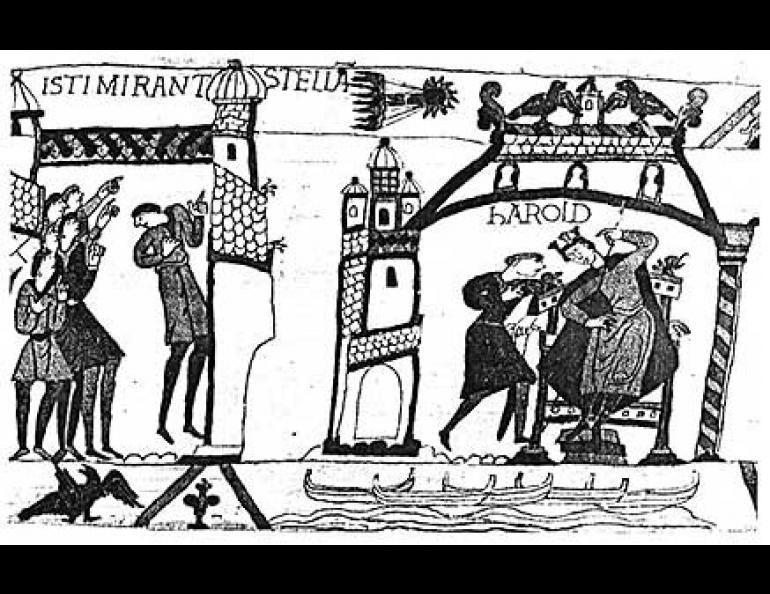
Halley's Comet
Since the beginning of mankind, they have evoked fear, awe and superstition. It was thought that they were harbingers of disaster, a sign of the wrath of an unpleased God--that they foretold plagues, the death of princes and the fall of kingdoms. Certainly King Harold II of England, knowing that the Normans were preparing to attack across the Channel, must have been a believer of the latter when one appeared in the sky in the year 1066 and he fell despondent. Shortly thereafter, on October 14, William the Conqueror defeated England at the Battle of Hastings and the course of history was changed.
What are they? Comets, of course.
Halley's comet, the most famous, and the one in the sky in that fateful year of 1066, is named for Edmund Halley (pronounced with the "a" as in "hat" and not as in "hay," which is a common practice) who, in 1707, concluded that comets of 1531, 1607 and 1682 were returns of the same apparition at 76-year intervals. He therefore predicted its return in 1758, and when the comet arrived on schedule, it was named for him posthumously.
Actually, the average period of return to perihelion (distance closest to the sun) in the comet's long elliptical orbit is almost 77 years, but successive periods vary as the orbit is slightly altered by gravitational effects of the planets. The last appearance of Halley's comet was in 1910, and it will reach perihelion next on February 9, 1986, when it will pass the sun to within 0.6 the distance between the earth and the sun. However, this will not be a good time for viewing, because it will be almost opposite the sun from the earth and lost in the glare. The best time to see the comet will come several weeks later when it is receding from the sun and will be closest to the earth. Some astronomers predict that the 1986 sighting will be inferior to that of 1910 at any rate, because the angle will be different (the comet's orbit is tilted 18 degrees from that of earth's). In Alaska, this may be a moot point because of the high latitude (remember the disappointment in 1968 of not being able to see the much-ballyhooed newly discovered comet Ikeya-Seki ) .
Scientists now are in general agreement that comets are composed mostly of water ice, with some methane ice, ammonia ice and a little solid matter thrown in for flavoring. Their favorite description is that they are "dirty snowballs." Halley's comet, they believe, is one of the larger--about 15 miles in diameter. The tail, which is so tenuous that starlight shines through it, is material which has been blown off the main body by the solar wind and always points away from the sun.
Planning has been underway in the United States and Europe to send a space probe through the tail of Halley's comet during its close approach to sample particles in the tail. Sadly, through lack of supportive funding in the U.S., it now appears that this will be primarily a European undertaking.



